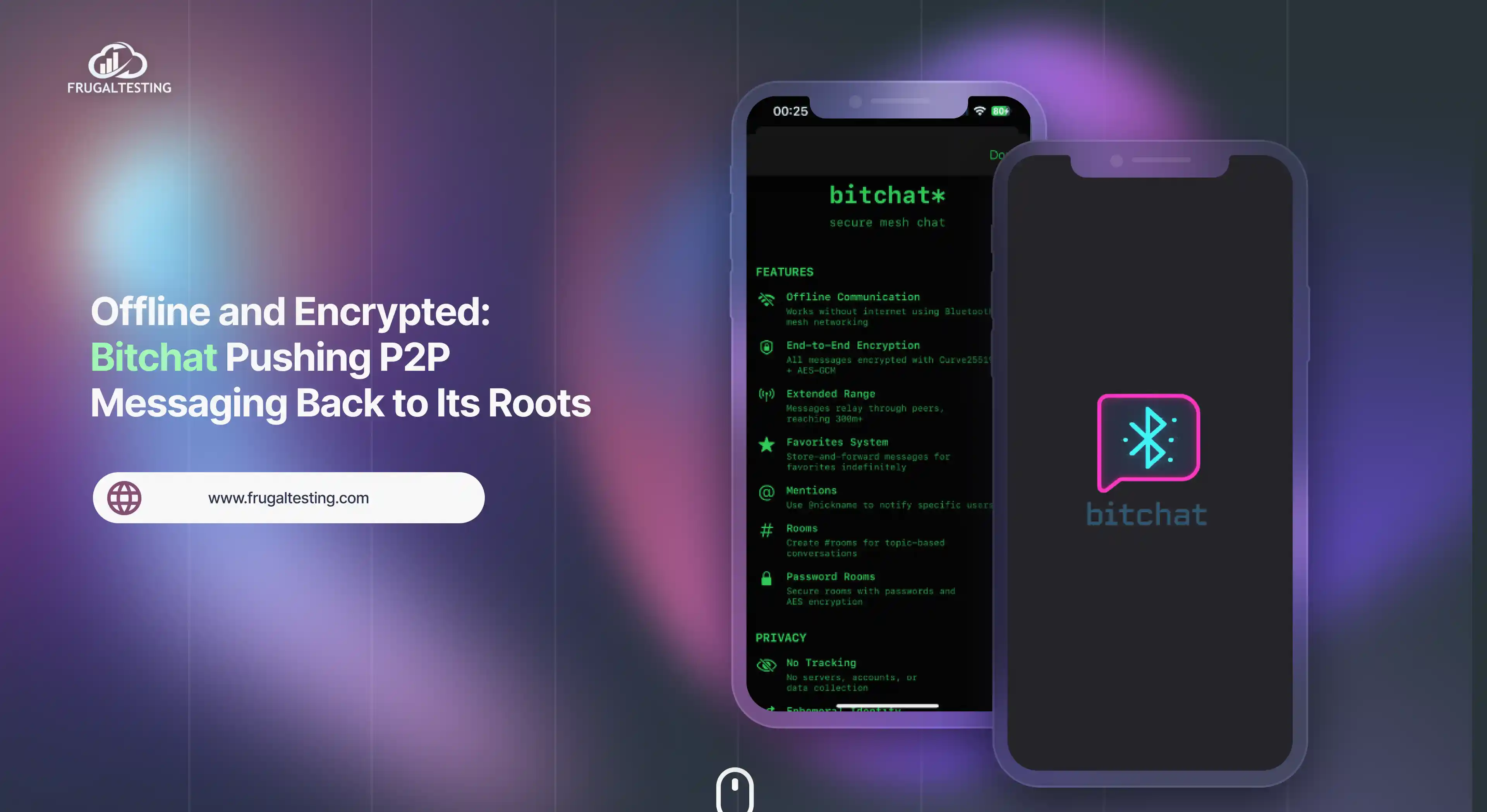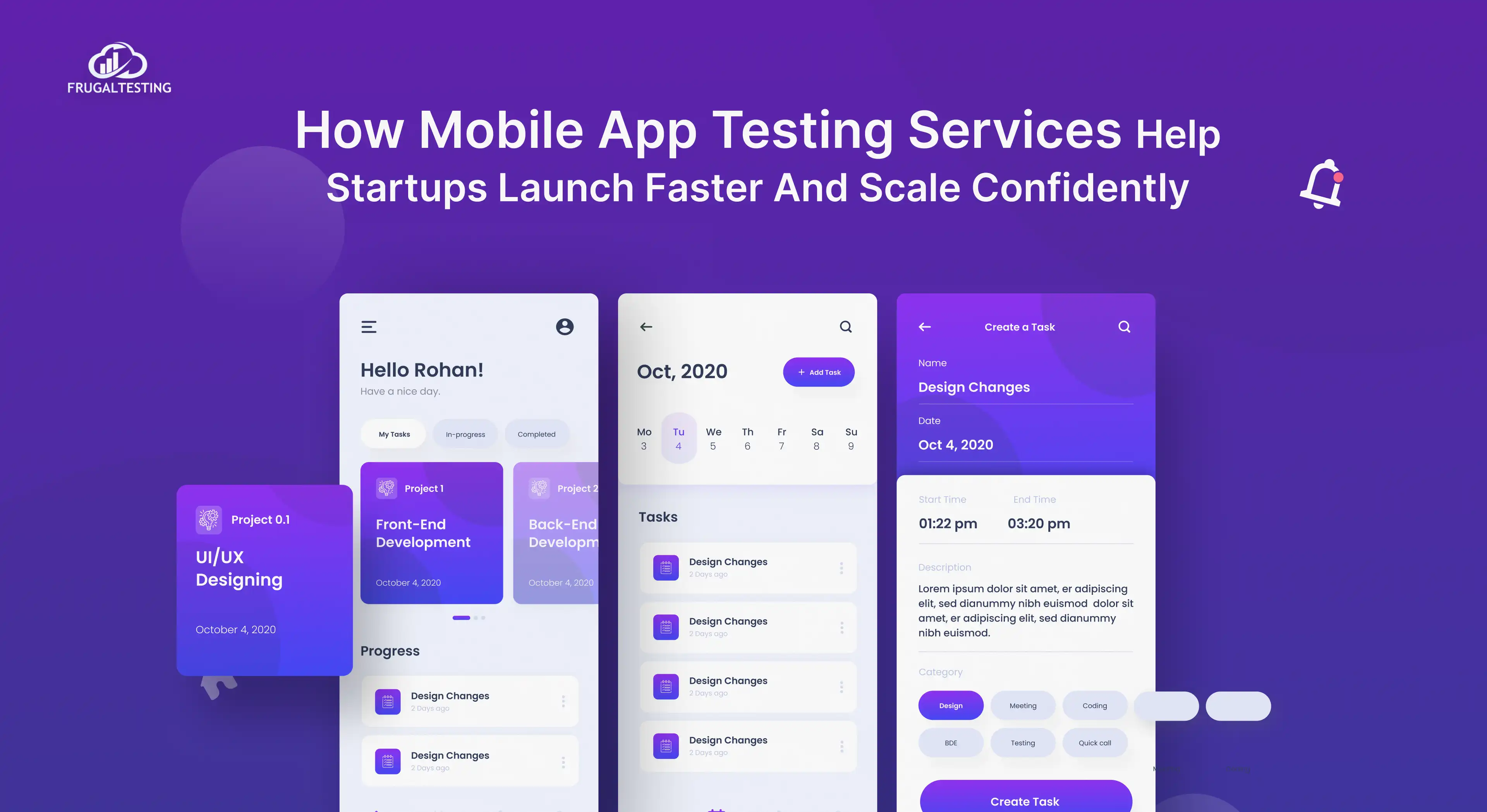Choosing between onshore, offshore, and nearshore software testing impacts cost savings, real-time collaboration, and project quality. Onshore software testing offers smoother collaboration and regulatory compliance through local teams. Offshore testing services provide access to offshore teams and specialized skills at a lower cost. Nearshore QA testing, with geographic proximity and cultural alignment, ensures real-time communication and faster development cycles.
For any software testing outsourcing company, selecting the right outsourcing model supports Agile methodologies, strengthens software quality assurance, and aligns with well-defined project requirements. Whether outsourcing software testing services or scaling functional and regression testing, choosing a best-fit outsourcing model ensures efficient QA delivery, better performance, and business growth.
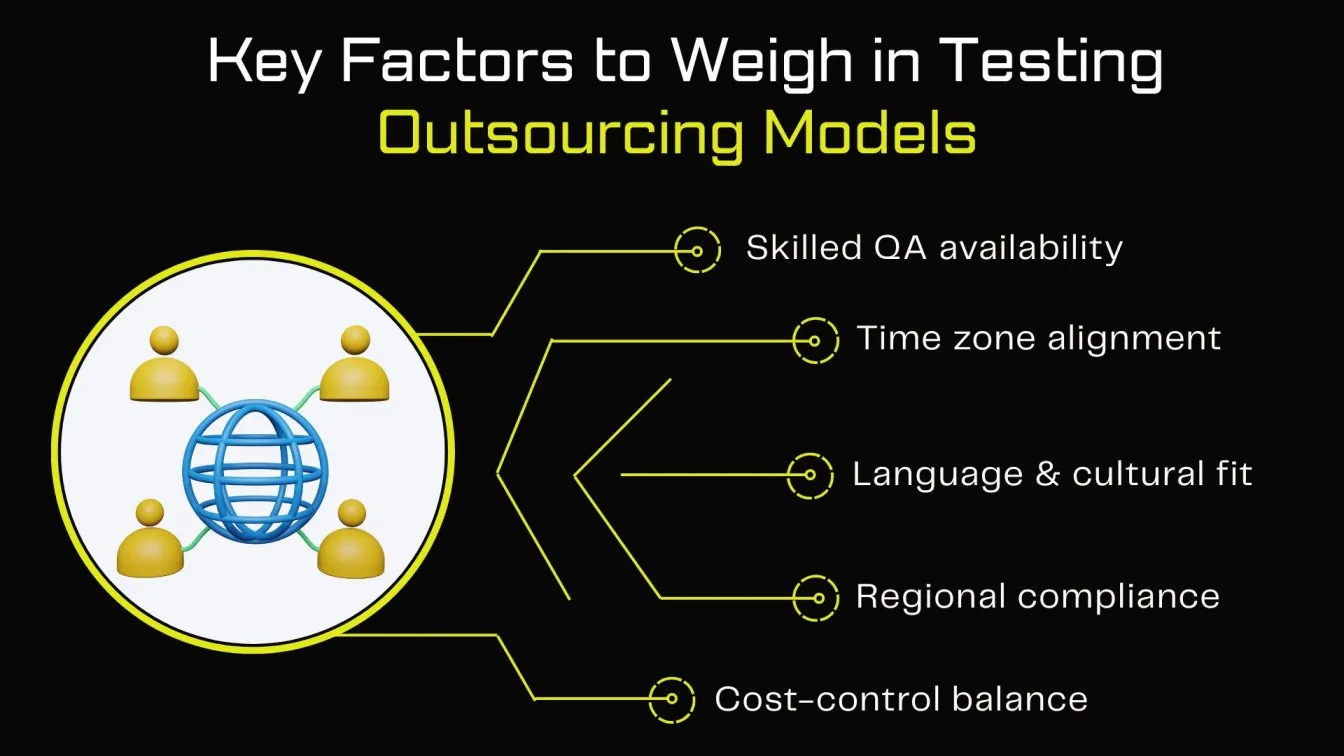
Testing Outsourcing Strategy Guide
📌 Onshore : Ideal for compliance, quality assurance in software testing, and internal team collaboration
📌 Offshore : Offers cost-effective testing via offshore software testing centres and offshore models
📌 Nearshore : Enables nearshore app testing services with time zone alignment and smoother collaboration
📌 Strategic Fit : Match outsourcing options to business strategy, timelines, and quality standards
📌 Emerging Trend : AI-driven software testing and automated QA testing tools gaining adoption across outsourcing models
What Is Testing Outsourcing and Why Is It Important?
Testing outsourcing is assigning QA procedures to outside professionals, including regression testing, functional testing, and AI-driven software testing. Whether you choose onshore, offshore, or nearshore software testing, the goal is to enhance quality control, cut expenses, and speed up delivery without putting undue load on your internal staff. It enables smoother collaboration, adherence to quality standards, and alignment with your overall business strategy and development cycles.
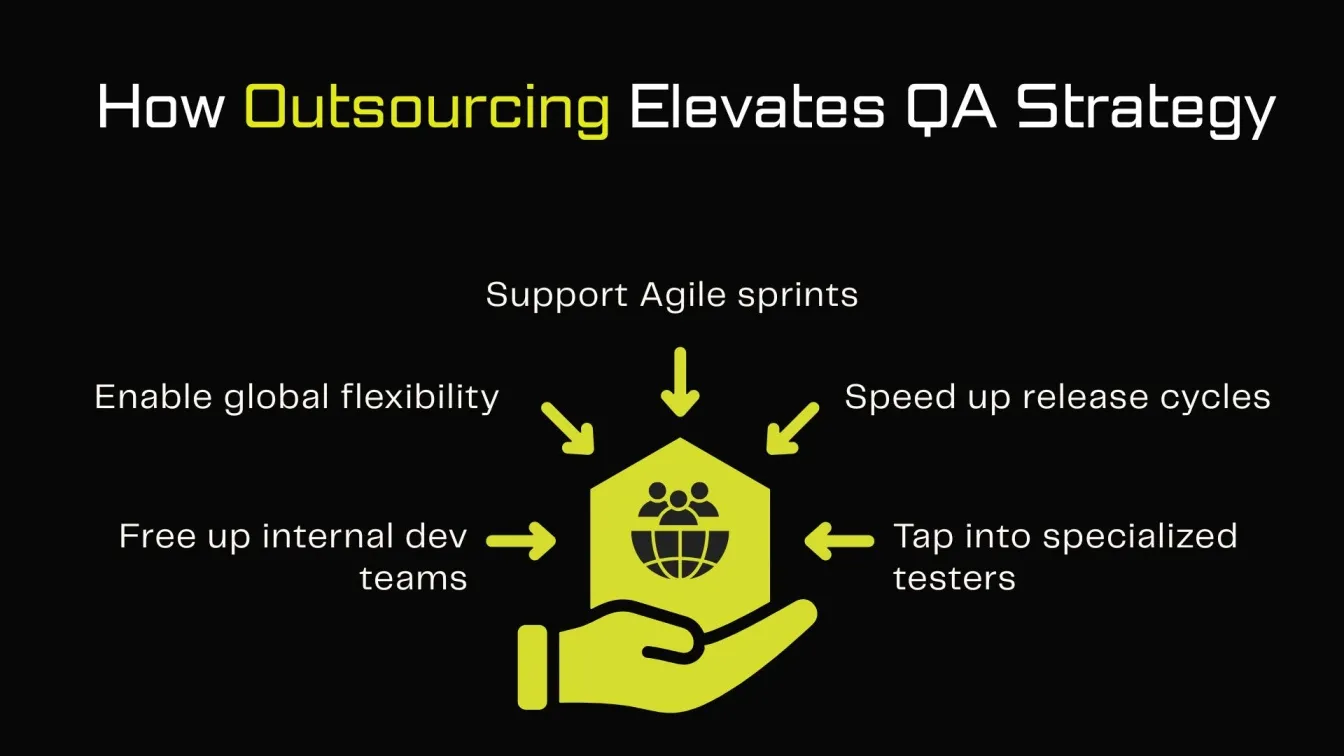
Benefits of outsourcing software testing
- Enables cost savings through offshore software testing services and access to offshore teams.
- Allows real-time collaboration via nearshore QA testing with teams in a nearby country.
- Offers access to specialized skills and advanced automated QA testing tools.
- Supports Agile methodologies for frequent iterations and faster project turnaround
Common challenges in outsourcing testing
- Cultural Barriers : Provide cultural training and establish shared communication norms to foster better alignment and smoother collaboration.
- Language Barriers : Choose outsourcing partners with strong English communication skills and use clear, concise documentation.
- Lack of Tool Compatibility : Align testing tools and platforms before the project begins to ensure seamless collaboration and reporting.
- Vendor Lock-In : Use open standards and maintain internal documentation to support vendor transition if necessary.
- Hidden Costs : Define a transparent pricing structure, include contingency budgets, and review contracts regularly.
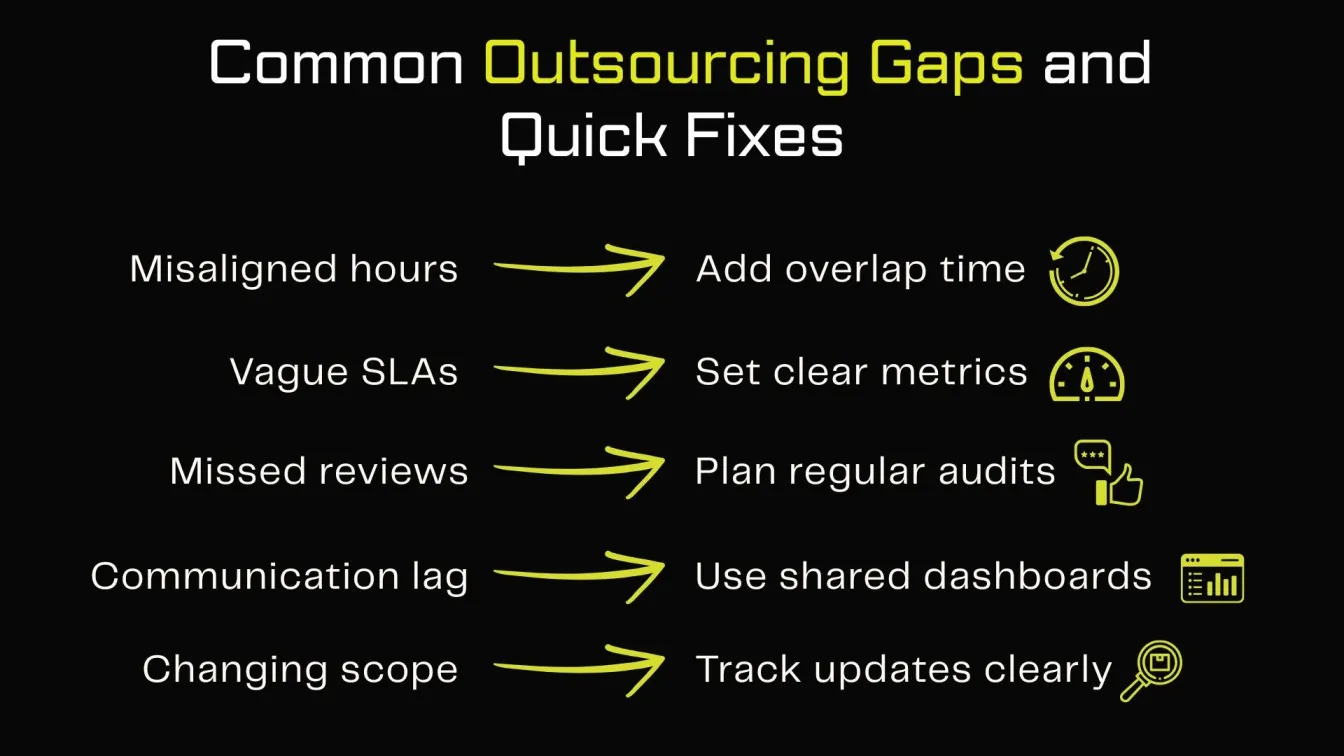
Key Factors to Consider Before Outsourcing Software Testing
Before outsourcing software testing, businesses must evaluate critical factors like team location, communication style, quality assurance needs, and cost. Choosing between onshore, offshore, or nearshore software testing impacts everything from real-time collaboration to regulatory compliance. Nearshore QA testing offers cultural alignment and proximity, ensuring smoother communication with nearshore development teams. Offshore software testing services, on the other hand, provide cost savings but may face time difference and quality control issues.
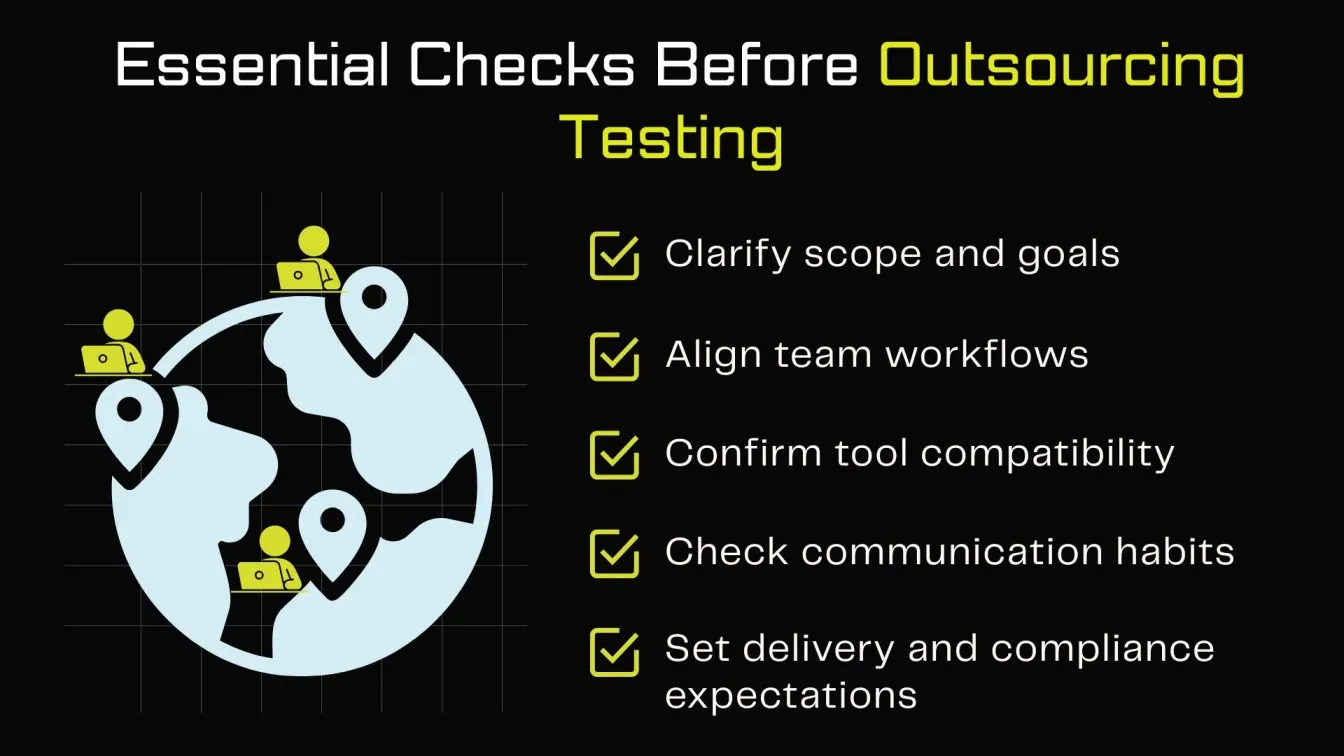
Evaluating the outsourcing model against well-defined requirements, available automated QA testing tools, and Agile methodologies ensures better alignment with your business process. Partnering with a reliable software testing outsourcing company strengthens your software quality assurance strategy and helps scale efficiently while maintaining performance and compliance standards.
Understanding Onshore, Offshore, and Nearshore Testing Models
Understanding the differences between onshore, offshore, and nearshore software testing models is crucial for selecting the right outsourcing strategy. Each model offers distinct advantages in terms of cost, communication, and collaboration. Onshore software testing provides smoother collaboration with local teams and ensures regulatory compliance. Offshore testing services offer significant cost savings and access to global specialized skills, while nearshore QA testing balances affordability with geographic proximity and real-time communication.
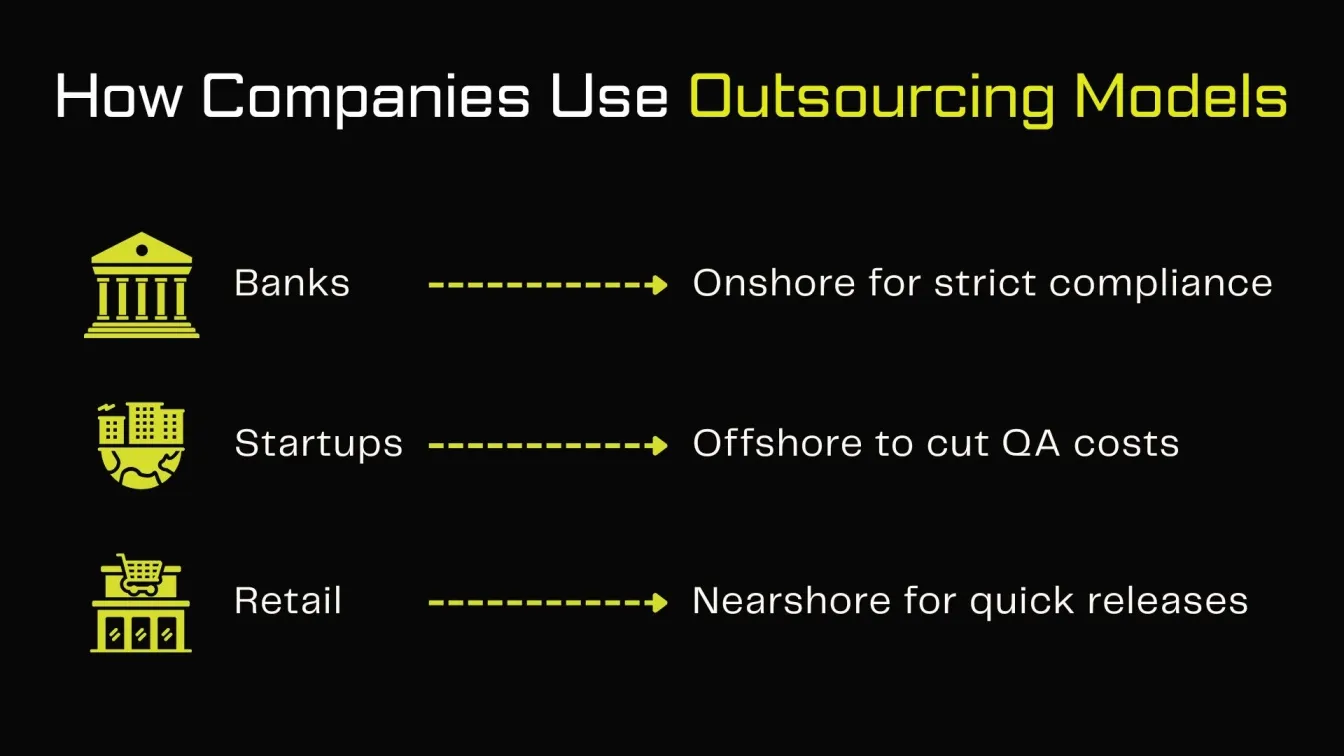
Choosing the right model helps optimize your software testing outsourcing approach, reduce risks, and align with your development cycles and business strategy.
Comparing Onshore, Offshore, and Nearshore Testing Outsourcing: Advantages and When to Choose Each Model
- Onshore is best for projects needing closer collaboration, strong data protection, and alignment with internal processes.
- Offshore suits companies looking for cost-effective testing, larger offshore teams, and extended delivery capabilities.
- Nearshore is ideal when time zone alignment, cultural compatibility, and real-time collaboration are key priorities.
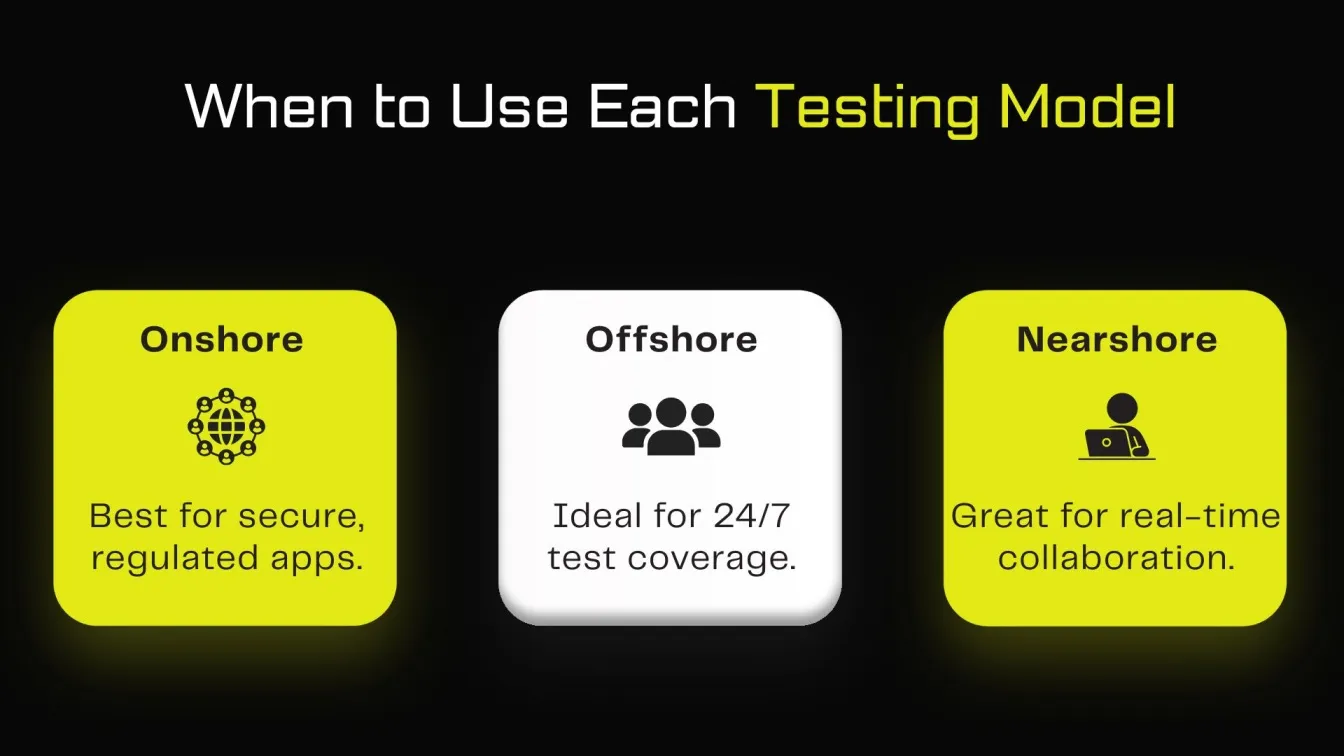
Based on your project requirements, quality standards, and compliance requirements, select the outsourcing model that best suits your needs.
Impact of Location on Testing Quality and Turnaround Time
The location of your testing team plays a major role in overall software testing quality and delivery speed. Onshore software testing ensures high-quality results due to fewer language barriers, better real-time communication, and compliance with local standards. For example, collaborating with an onshore team in the same region reduces delays and improves response times.
Nearshore software testing, often conducted in neighboring countries, offers geographical proximity and fewer cultural differences, enabling faster feedback loops and smoother collaboration. For Agile projects that need regular iterations, it's perfect.
While offshore testing services offer cost savings, they may suffer from time differences and language barriers, affecting turnaround. Choosing the right location ensures strong software quality assurance and timely delivery in all outsourcing options.

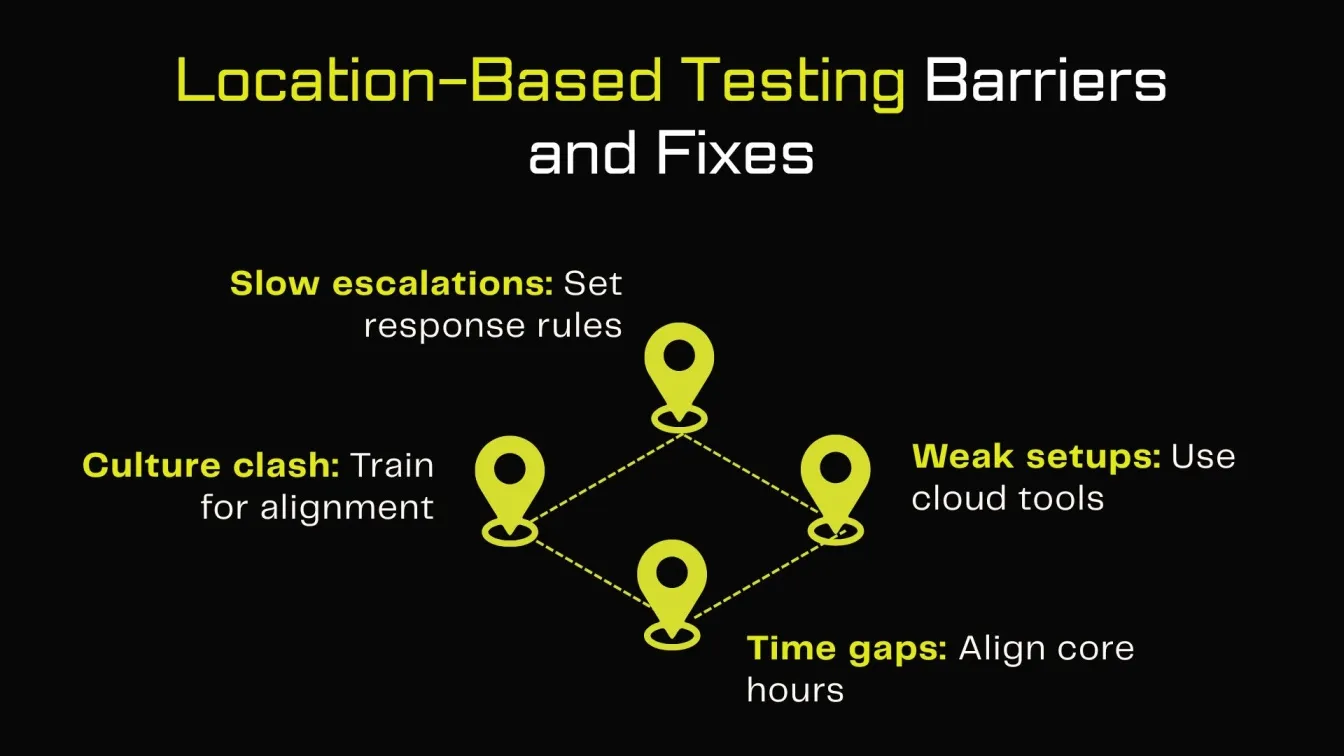
Cost Comparison: Onshore vs. Offshore vs. Nearshore Testing
Choosing the right type of outsourcing involves understanding outsourcing costs and cost implications across different models. Each approach comes with distinct trade-offs in pricing, communication, and collaboration, especially across teams in countries with different economies and business practices.
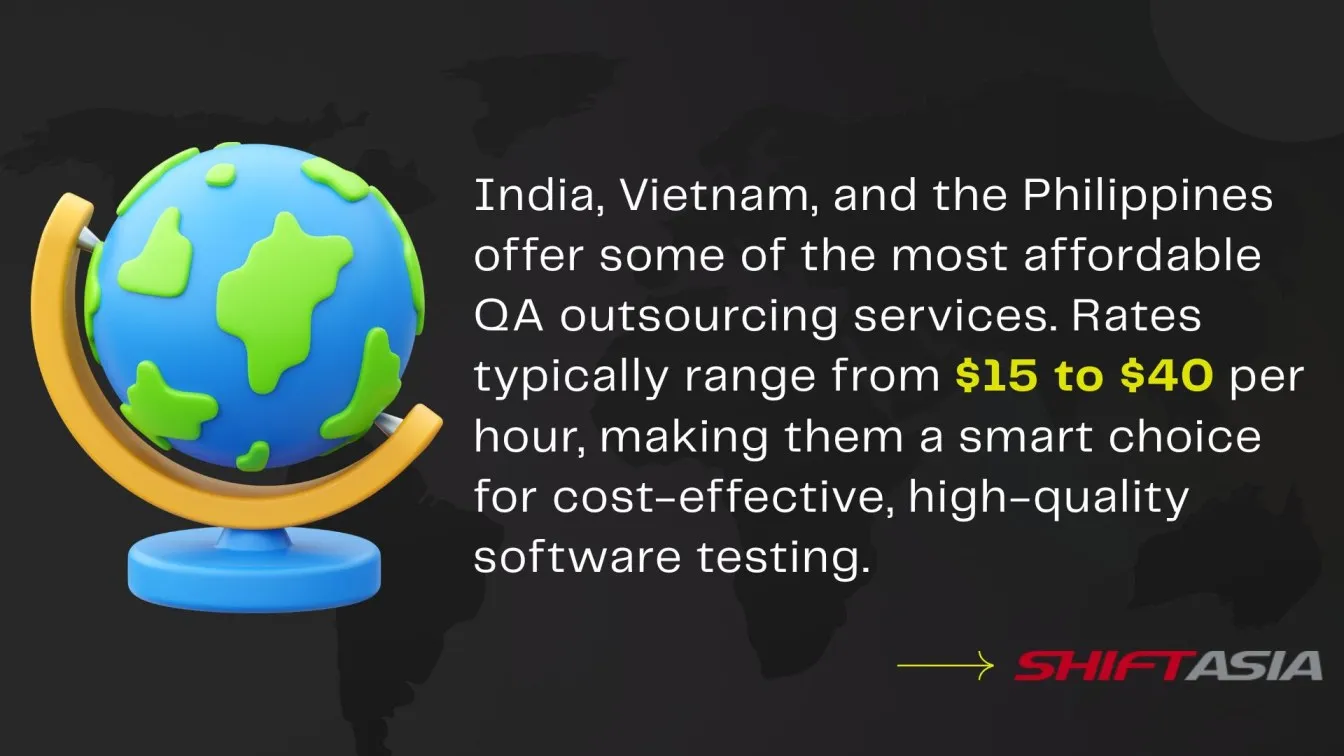
Common Myths About Testing Outsourcing Models
Many believe software testing outsourcing compromises quality or control but these are outdated myths. Modern software testing services, including AI-driven software testing and automated QA testing tools, support fast, scalable delivery aligned with specific business goals.
Some assume that automated functional testing eliminates the need for manual testing, overlooking its role in understanding unique project details.
Another myth is that outsourcing software testing services only suits big enterprises, but onshore companies, nearshore partners, and offshore options serve numerous clients—from startups to enterprises with customized solutions.
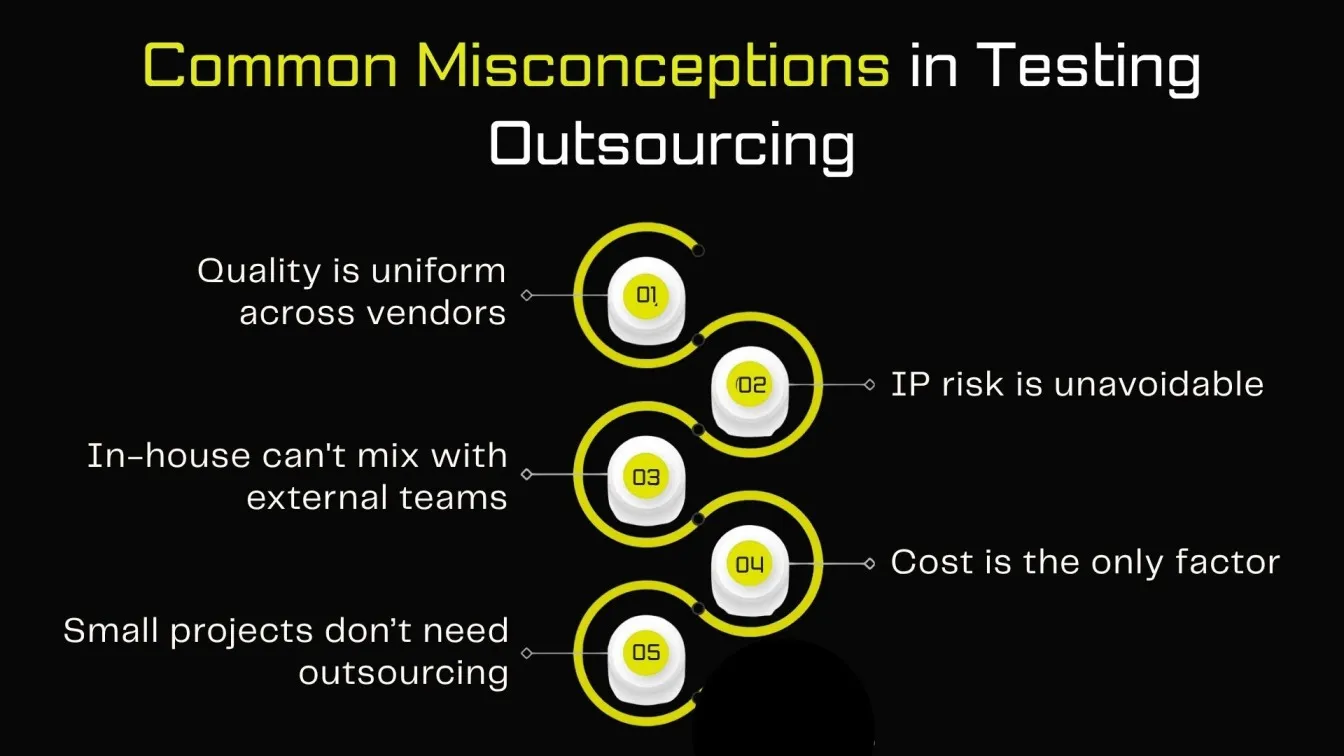
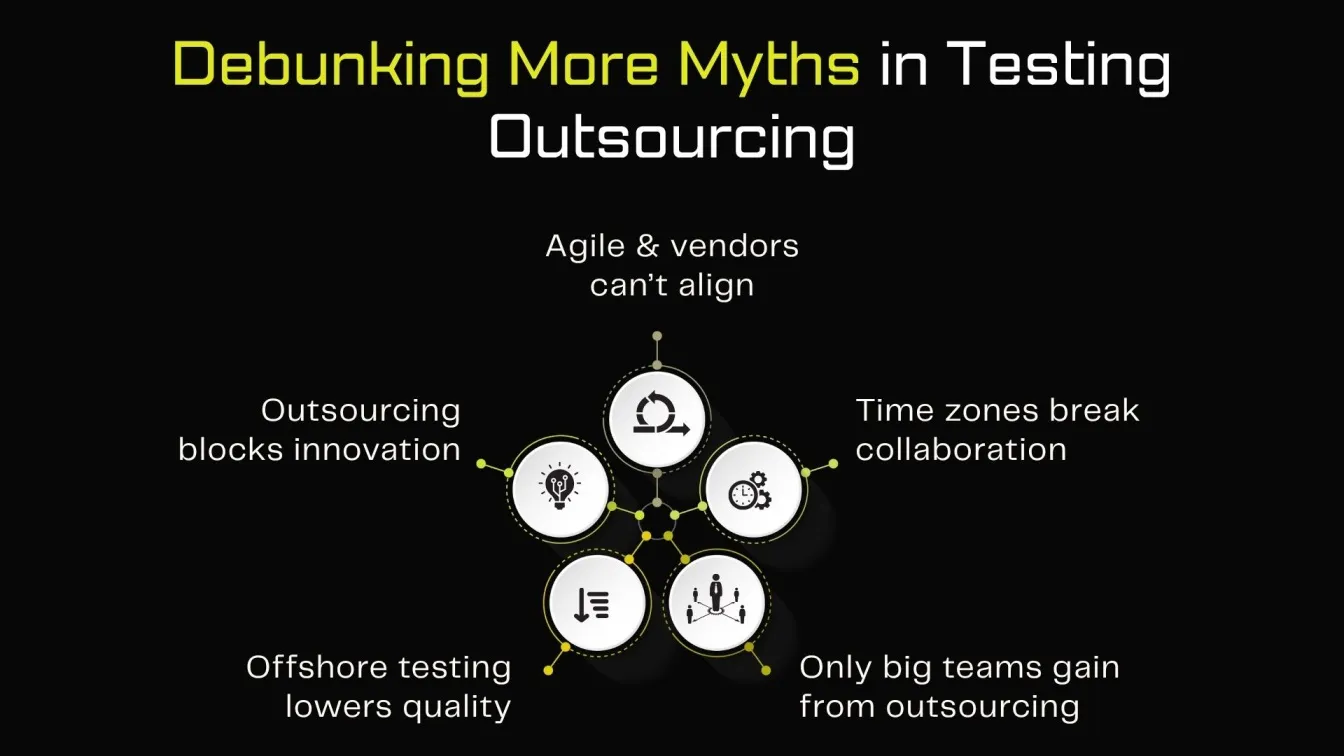
With the rise of hybrid approaches and offshore alternatives, outsourcing offers primary advantages like flexibility, efficiency, and compliance regardless of difference in time zones.Trusted service providers help maintain high quality standards, not compromise them.
Risk Factors in Onshore, Offshore, and Nearshore Testing
Outsourcing software testing whether via the onshore model, offshore partner, or nearshore partner comes with specific risk factors businesses must address. While software testing tools and automated QA testing software increase consistency, gaps may arise due to differences in time zones, communication barriers, and language barriers, especially with offshore outsourcing models.
Onshore companies offer better control but at higher costs, whereas Nearshore companies reduce risk through closer time alignment and geographical proximity, improving real-time collaboration.

Lack of understanding in project details, poor business practices, or unclear goals can magnify these risks. A strong service provider with a clear business approach and defined workflows ensures minimal disruption making even offshore alternatives viable with careful planning.
Final Verdict: Which Testing Outsourcing Model Is Best for You?
Your business objectives, project complexity, and financial constraints will determine the optimal testing outsourcing model.The onshore model is ideal when you require strong legal compliance, minimal communication challenges, and in-person meetings with your internal team perfect for highly regulated industries.
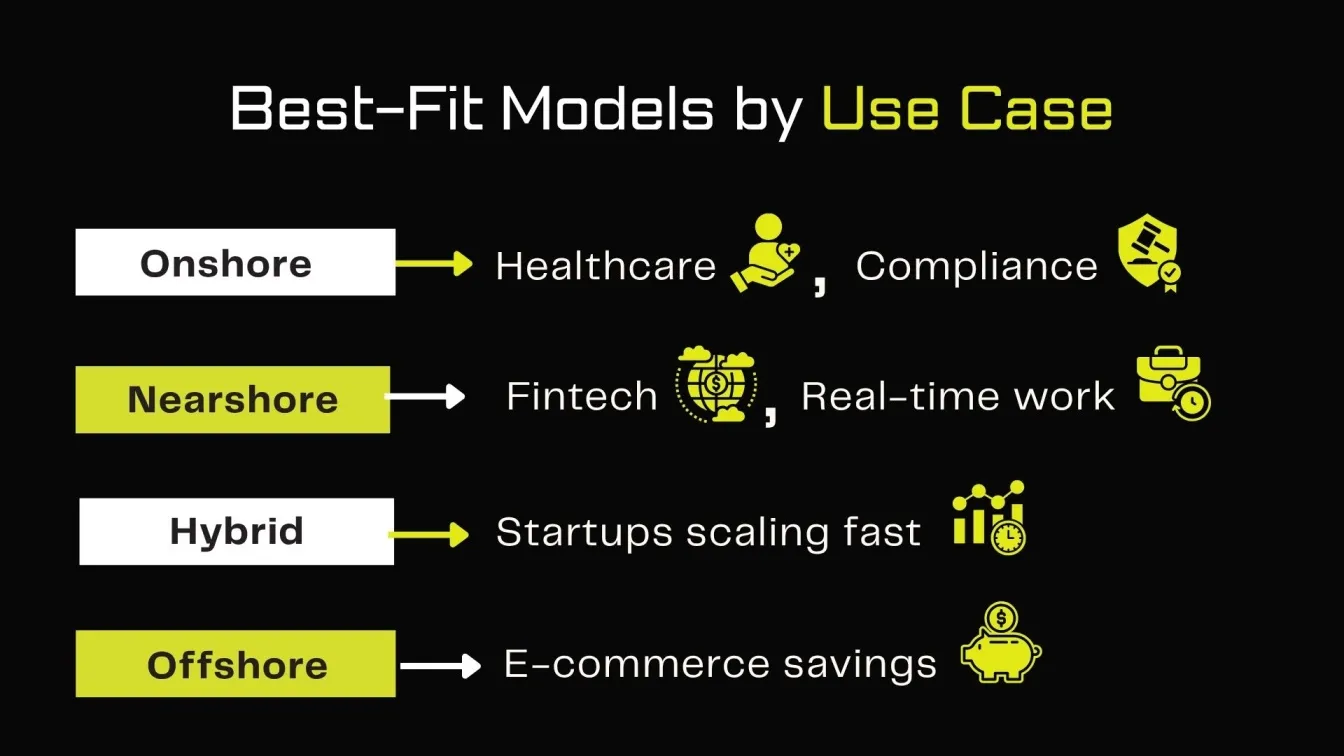
For companies focused on substantial cost savings, offshore software testing centres or offshore partners offer value, but may face cultural barriers and language differences due to teams in foreign countries.
Nearshore testing strikes a balance offering moderate cost savings, geographical proximity, and a nearshore partner with similar business practices.
Ultimately, a hybrid approach combining nearshore QA testing and automated functional testing can offer the primary advantages of all three models with lower risk and higher efficiency.
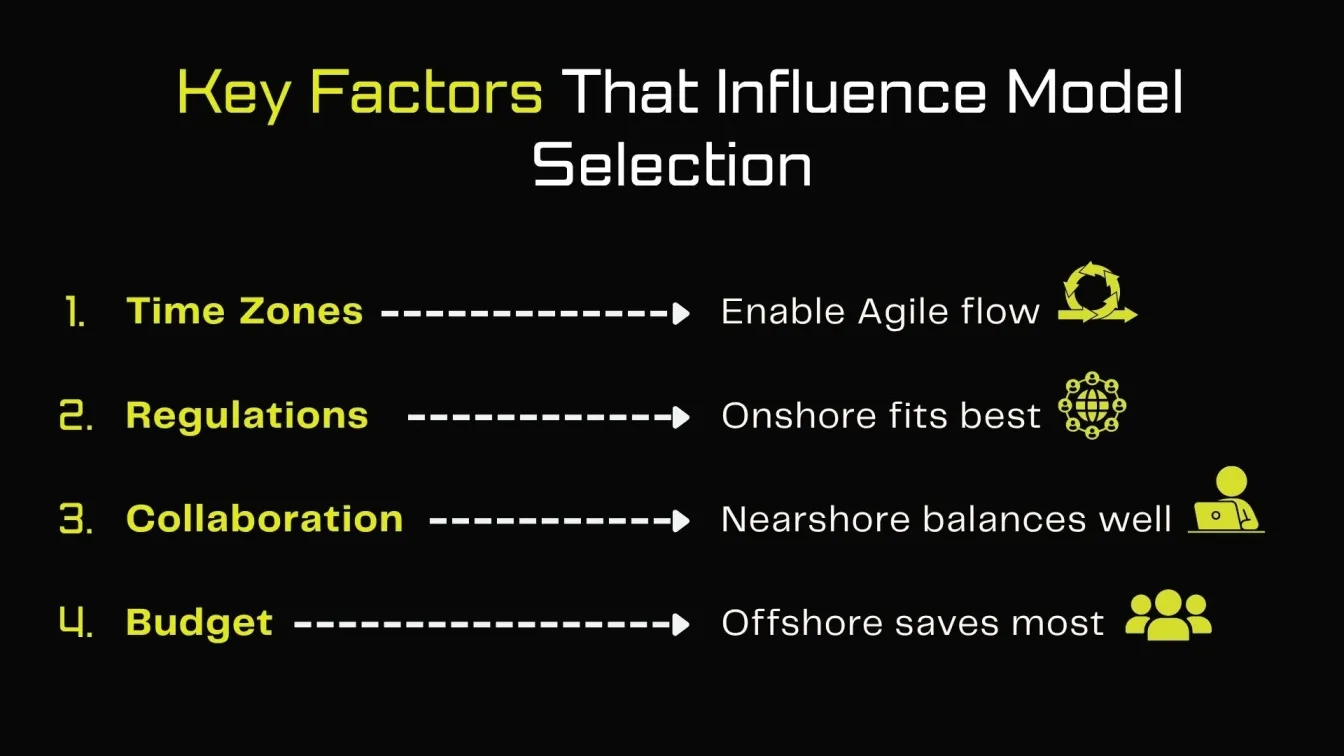
Conclusion: Choosing the Best Testing Outsourcing Strategy for Long-Term Success
Outsourcing software testing, whether through onshore, offshore, or nearshore app testing services, is no longer just a cost-saving tactic. It is a strategic software outsourcing decision aligned with your project requirements, business approach, and long-term quality assurance goals.
From penetration testing software to automated QA testing and AI-driven software testing, companies now have access to flexible, scalable models tailored to different types of outsourcing and focused on cost efficiency.
Whether you collaborate with nearshore teams in a neighboring country with time zone overlap or explore offshore companies in a distant country with time zone gaps, selecting the right IT outsourcing model requires careful planning and trusted service providers.
The right strategy, whether full onshore outsourcing or a hybrid approach, helps overcome cultural mismatch, enhances collaboration with effective communication software, and ensures alignment with your evolving business strategy and development cycles.
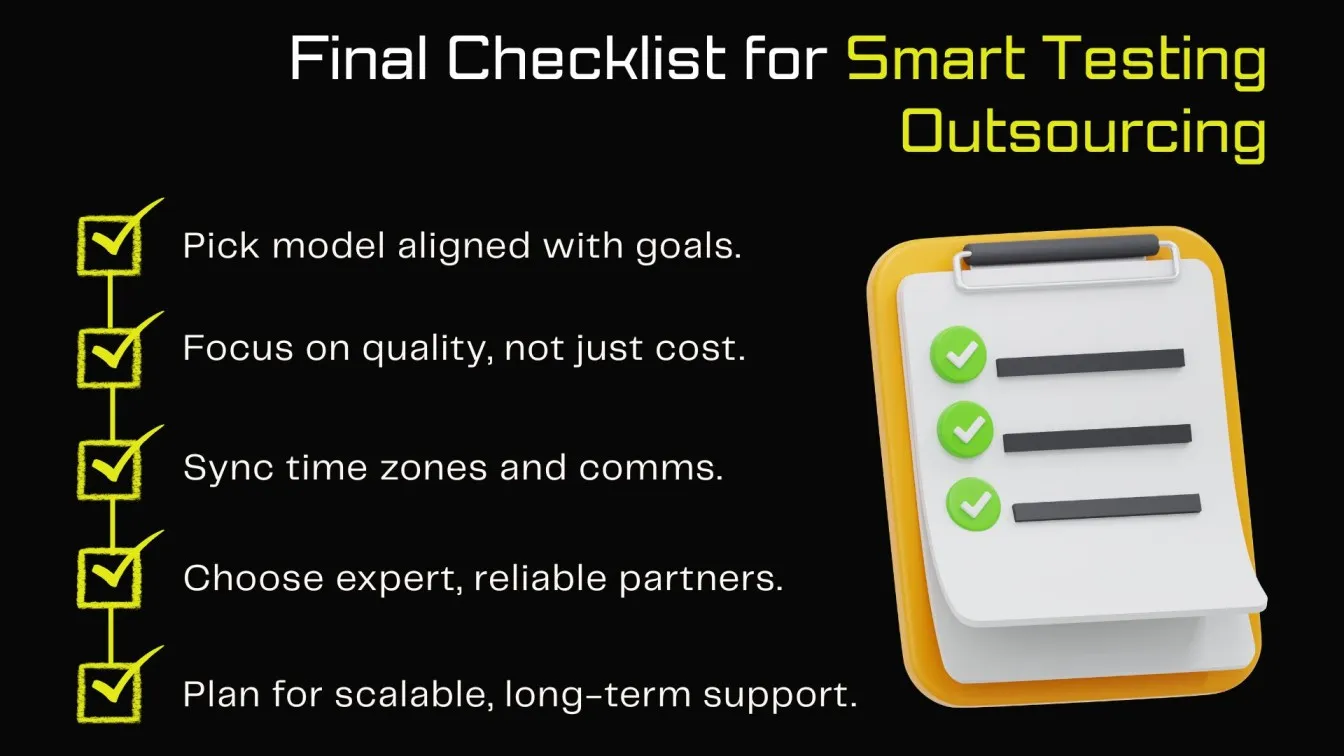
Partnering with a software testing service provider like Frugal Testing or other leading software testing companies in Hyderabad ensures scalable functional testing solutions and expert-driven AI-driven test automation services.
People Also Ask
What is the difference between onsite and nearshore?
Onsite testing happens at the client’s location, while nearshore testing is outsourced to a nearby country for cost efficiency and time zone alignment.
How do outsourcing nearshoring and offshoring differ from reshoring?
Outsourcing, nearshoring, and offshoring move work to external teams abroad, while reshoring brings those operations back to the company’s home country for greater control and proximity.
What is a rig in testing?
In testing, a rig refers to a controlled setup or environment used to simulate real-world conditions and test software or hardware performance.
What is an onsite offshore team structure?
An onsite-offshore team structure blends local and offshore teams, balancing real-time collaboration with cost-effective remote development support.
What is BPO testing?
BPO testing is the process of validating and verifying outsourced business processes to ensure they function correctly, efficiently, and meet quality standards.




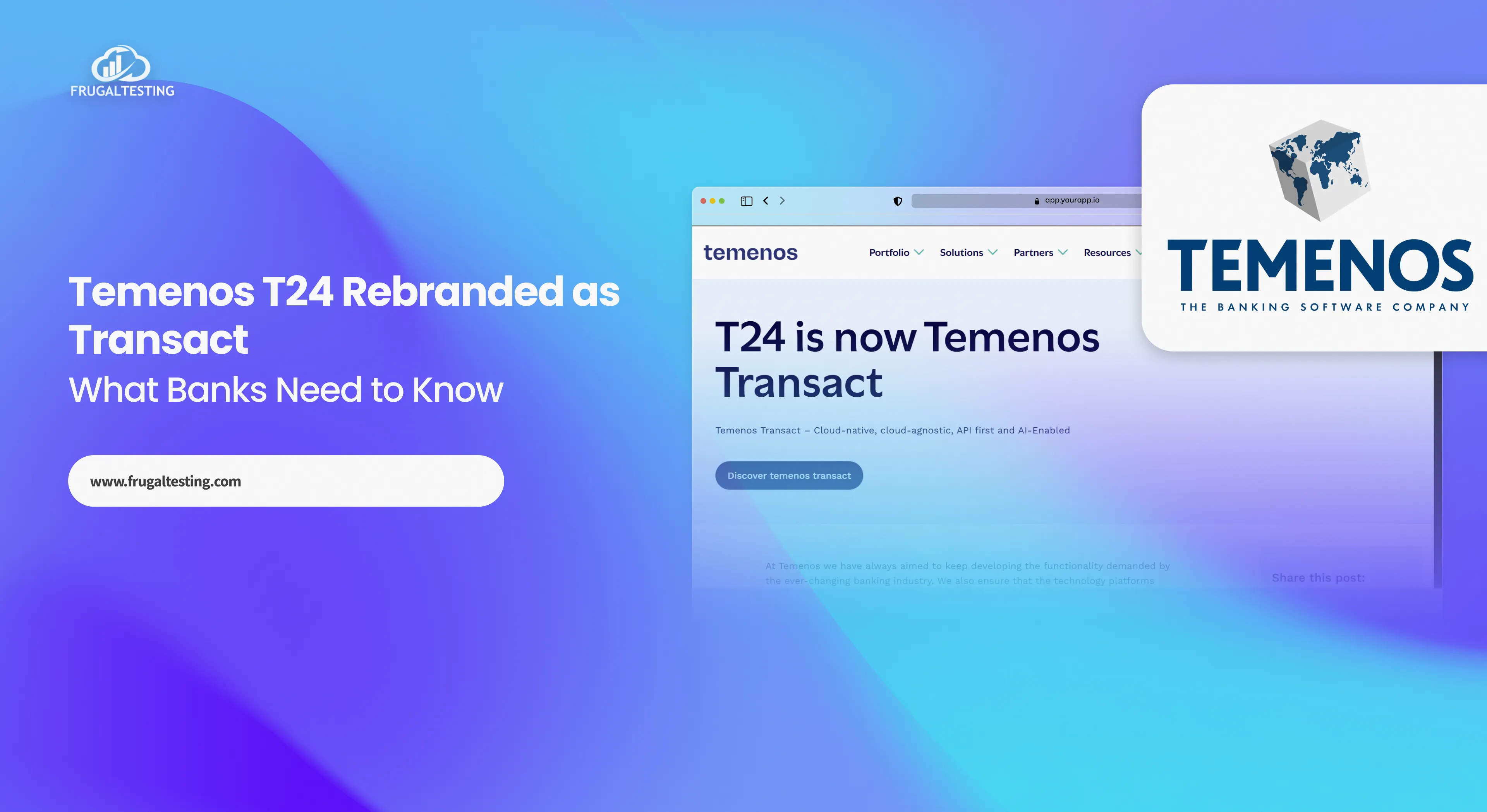
%201.webp)
